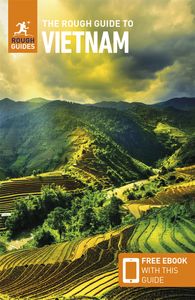The Rolling Thunder Campaign
The band of peaks to the west of Highway 14 en route to Pleiku, and the rugged terrain buttressing them, constituted one of the American War’s major combat theatres. It was an NVA (North Vietnamese Army) attack on Pleiku, in February 1965, that elicited the "Rolling Thunder" campaign; the war’s first conventional battle of any size was fought in the Ia Drang Valley, southwest of Pleiku, eight months later. Hundreds of Americans died at Ia Drang, but many times more Communists perished, spurring America to claim victory by dint of a higher body count. A decade later, in March 1975, Pleiku was abandoned when NVA troops overran Buon Ma Thuot. As the South’s commanding officers flew by helicopter to safety, two hundred thousand Southern soldiers and civilians were left to make their own way down to the coast, hounded at every step by NVA shells.
The Villages Around Pleiku
This far north in the highlands, the Jarai and, to a lesser extent, the Bahnar outnumber the E De, though many of them have been assimilated into mainstream Vietnamese culture. You’ll need a guide to tour any of these villages.
The Jarai villages
It’s possible to visit a number of Jarai villages in the area and, as is common with this particular tribe, the incredibly ornate graveyards are the main focus of interest. In the past the Jarai would stick bamboo poles through the earth and into a fresh grave, through which to "feed" the dead, though now they tend to leave fruit and bowls of rice on top of the grave. Plei Phun is by far the most commonly visited of the local Jarai villages. Your guide will show you around the headman’s house, the local graveyard and village spring. The graveyard is particularly interesting, and you’ll see roughly hewn hardwood statues depicting figures in a range of moods placed around each family grave.
The Bahnar villages
A group of four secluded but easily accessible Bahnar settlements lie 38km east of Pleiku, en route to Quy Nhon. The villages of Dek Tu, De Cop, De Doa and Dek Rol all rub shoulders with one another across a small area of forests and streams. Small split-bamboo and straw houses on stilts proliferate through these orderly communities, and each one boasts an impressive, steeply thatched rong, or communal house, where ceremonies are performed, local disputes are resolved and decisions taken. Again, the graveyards are particularly interesting, particularly that of Dek Tu, where the practice of feeding the dead is prevalent. Unlike the Jarai, each of the deceased has his own individual grave complete with a small sloping roof. Ladders made out of bamboo poles are leant against the graves to aid the journey to a new life; some are adorned with surprising ornaments, including wooden American fighter jets.
Top image: Chu Dang Ya volcano mountain near Pleiku city, Vietnam © Nguyen Quang Ngoc Tonkin/Shutterstock




















